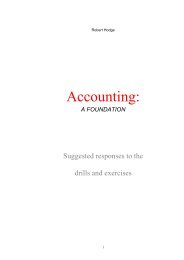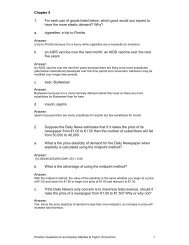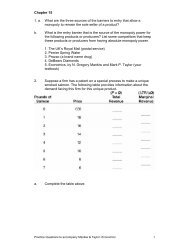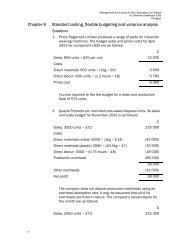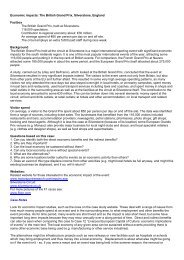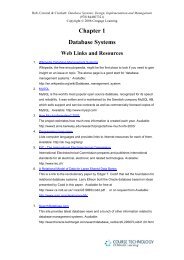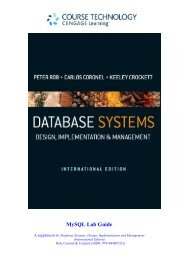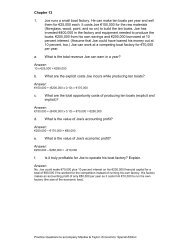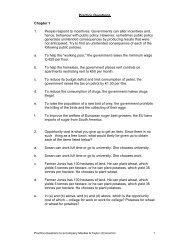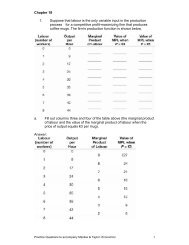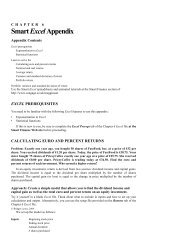Answer - Cengage Learning
Answer - Cengage Learning
Answer - Cengage Learning
You also want an ePaper? Increase the reach of your titles
YUMPU automatically turns print PDFs into web optimized ePapers that Google loves.
<strong>Answer</strong>: No. The opportunity cost of investment is that someone must forgo currentconsumption in order to save and invest.Chapter 26Suppose you are listening to an opposition party spokesperson being interviewed on radioduring an election campaign. When questioned about their position on economic growth,the spokesperson says, "We need to get this country growing again. We need to use taxincentives to stimulate saving and investment, and we need to get the budget deficit downso that the government stops absorbing our nation's savings."1. If the opposition party’s spending plans remain unchanged from current governmentspending, what inconsistency is implied by the spokesperson's statement?<strong>Answer</strong>: Tax incentives to stimulate saving and investment require a reduction in taxes.This would increase the deficit, which would reduce national saving and investment.2. If the opposition party truly wishes to decrease taxes and decrease the budget deficit,what has the spokesperson implied about his party’s plans for government spending?<strong>Answer</strong>: The candidate plans to reduce government spending.3. If policy makers want to increase growth, and if policy makers have to choose betweentax incentives to stimulate saving and tax incentives to stimulate investment, what mightthey want to know about supply and demand in the loanable funds market before makingtheir decision? Explain.<strong>Answer</strong>: Policymakers would want to know the elasticity (similar to the steepness) of thesupply and demand curves. If loanable funds demand is inelastic, changes in loanablefunds supply have little effect on saving and investment, so tax incentives to increasesaving at each interest rate do little for growth. If loanable funds supply is inelastic,changes in loanable funds demand have little effect on saving and investment, so taxincentives to increase investment at each interest rate do little for growth.Chapter 27Suppose you are about to graduate with a first class degree in economics. Yourboy/girlfriend’s parents are visiting. When they arrive they find you throwing darts at theshare price pages of the Financial Times, which you have pinned to your notice board onthe wall. You inform them that you received a generous signing-on bonus from thecompany for which you agreed to work after graduation. You are now in the process ofpicking the shares in which you plan to invest. Your visitors are horrified. Yourboy/girlfriend’s father says, "There's got to be a better way to choose shares. I can giveyou the phone number of my stockbroker, or you could at least buy a well-known, wellmanagedunit trust or investment fund."1. What is the stock valuation method to which your father is referring, and what is itsgoal?



